Protect your tech: 20+ smart home secrets
How to get the best from your house tech
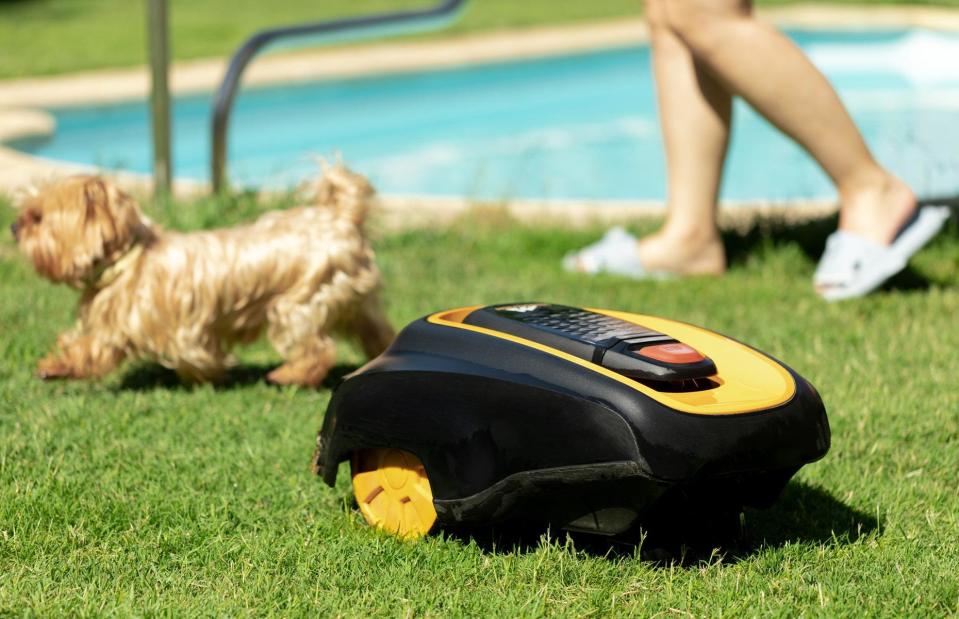
Studio Nut / Shutterstock
Smart home tech has come a long way in the past few years. It's estimated that more than 130 million homes around the world have at least one smart speaker, according to Statistica, and that's set to rocket to 335 million by 2027.
From Amazon Echo and Google Home to Apple HomePod, today's home hubs are faster and smarter than ever, but how do you choose from the vast array of tech out there? And how do you get the most from it?
From surprising hacks and privacy protection to the latest innovations on the horizon, read on to discover which gadgets will enhance your home.
Free voice-controlled smart home app
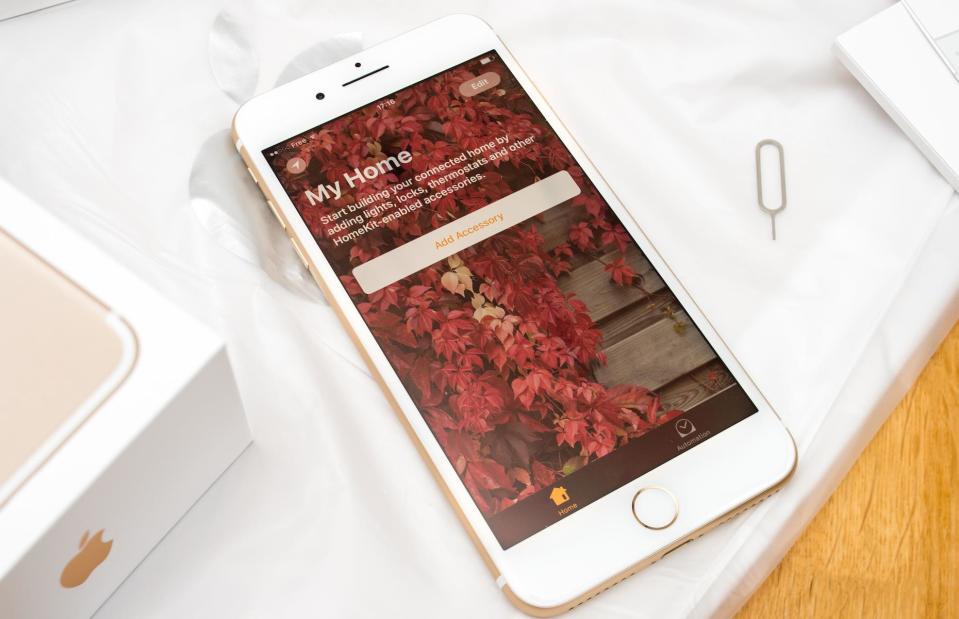
Hadrian / Shutterstock
A smart home hub, like Amazon Echo and Google Home, serves as a central control point for various smart devices in your home to control smart tech such as lights, thermostats and cameras. The best-known devices can cost between £19.99 ($25) and £299 ($372), but there is a budget-friendly alternative for anyone who owns an iPhone or iPad.
The Apple Home app (also known as Apple HomeKit) is free to download and lets you control any compatible smart home devices without the need for a physical hub. It may not have all the bells and whistles of the main hubs on the market, but it'll let you control your heating and lighting with just a few words to Siri.
Alexa has 100,000 skills and counting

Zigres / Shutterstock
Launched in 2014, Amazon's smart assistant now has over 100,000 skills, apps designed especially for Alexa, that homeowners can use with voice commands.
These include booking an Uber, playing your favourite Spotify playlists, finding your phone, making a donation to charity or even starting your car. Innovations are happening all the time, too.
During the pandemic, smart security systems grew by 23% and it is predicted that 20% of households worldwide will own smart home technologies by 2025, according to The Tech Report.
Apple doesn't rule in the smart home
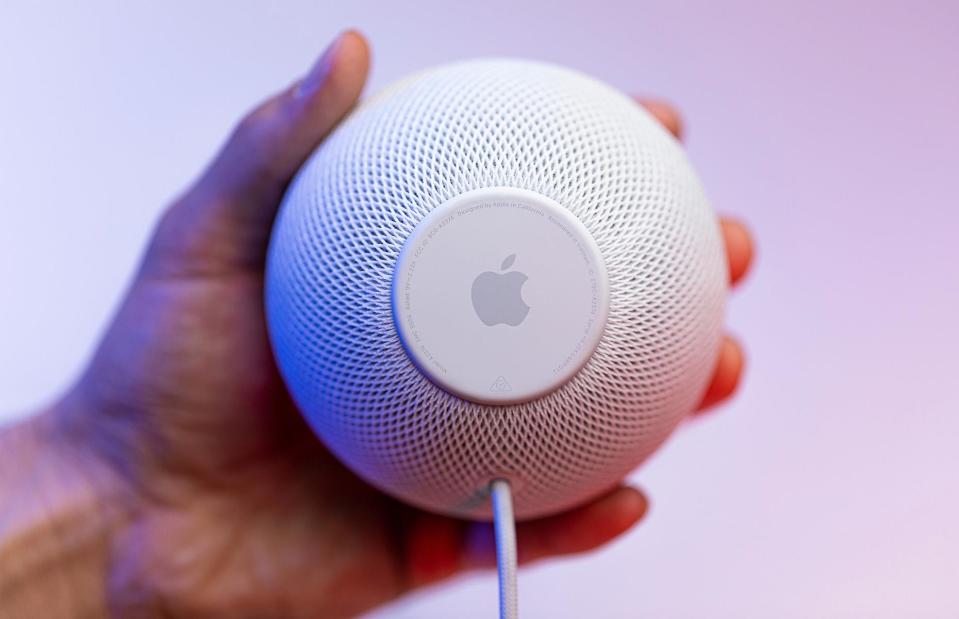
Hopix Art / Shutterstock
Interestingly, while Apple may prove popular when it comes to laptops and smartphones, smart speakers are a different story. Of the 10 countries surveyed, only China showed a preference for Apple HomePod, according to Statista.
In 2023, Amazon Echo was the most popular choice of smart speaker in homes across the UK, US, Germany, Brazil, India and Canada. Sweden and the Netherlands preferred Google Home, while homes in South Korea opted for KT speakers.
Home hubs aren't necessarily portable
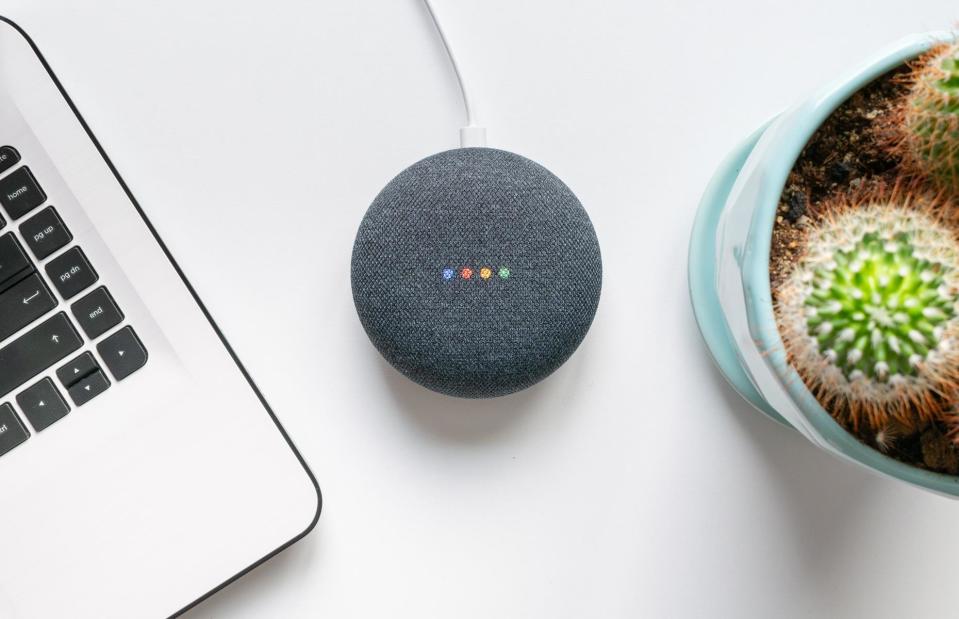
CoinUp / Shutterstock
It's worth noting that the Amazon Echo and Google Home aren't portable speakers, they need to be plugged in at the wall. So if you want to use your voice assistant throughout the house, you'll need at least one separate unit upstairs or at different ends of the home.
However, you can buy Alexa or Google Assistant-enabled portable wireless speakers that have a rechargeable battery, like the Ultimate Ears Megablast or Sharkk Boombox. But you can’t use them to control other smart home devices.
Smart speakers listen for their 'wake' word
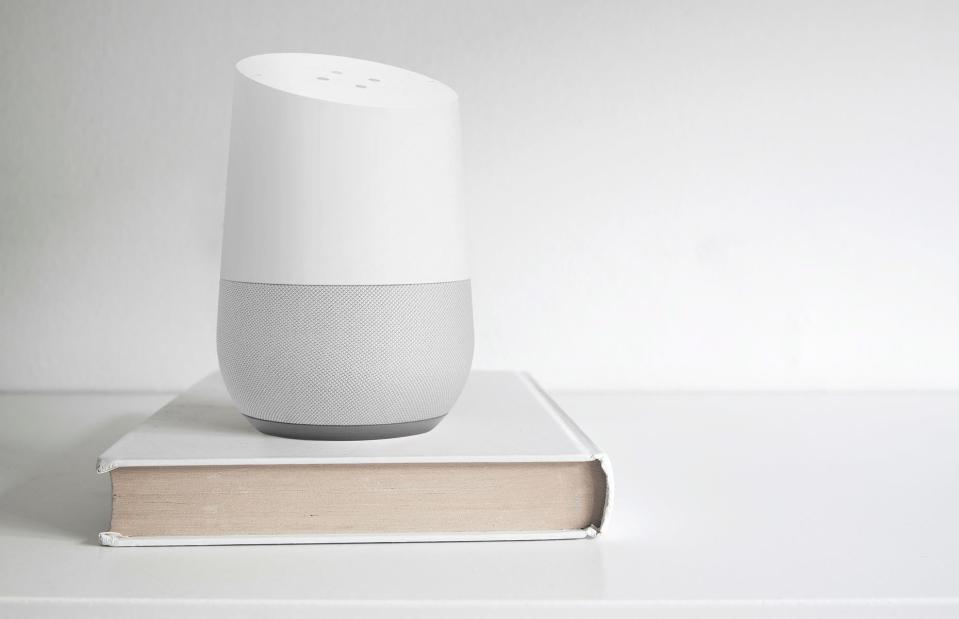
Juan Ci / Shutterstock
In the UK alone, almost 50% of 25 to 64-year-olds own a smart speaker according to Statista. It's thought that over 35% of American adults now own one, as reported by news site NPR.
While not eavesdropping on your conversations, the Amazon Echo and Google Home are always listening for their wake words: ‘Alexa’ in the case of the Echo and ‘OK, Google’ or ‘Hey, Google’ in the case of the Google Home unit. They can react quickly to any command you give.
Depending on your smart device, there are various ways to stop it from listening in, which range from turning off the microphone to turning the device off completely.
Don't place your smart speaker near a window
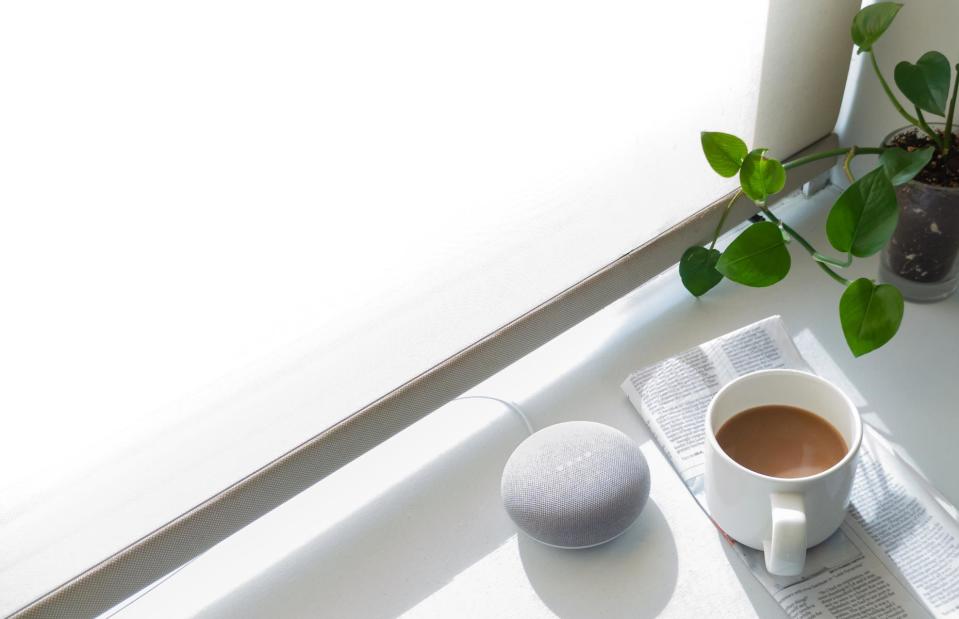
Antwon McMullen / Shutterstock
Once you've started with smart devices, there are a range of precautions you can take to keep your smart home safe. As anyone can control your Amazon Echo or Google Home hub with their voice, it's important to keep your unit away from any windows.
Otherwise, an unscrupulous person could shout commands through your window or even make a purchase and then intercept the parcel when it's being delivered.
Every smart home device is a potential invitation to hackers

F8 studio / Shutterstock
Any internet-connected gadget that isn’t protected by a secure password could be accessed by a hacker, who could steal your data or take control of the device for nefarious purposes.
If they managed to get into your Wi-Fi network through your router they could easily take over any other devices on the network that don’t have a password.
Remember, always change default passwords to your own secure ones, and always install software updates when they become available.
Voice purchasing on the Amazon Echo is on by default
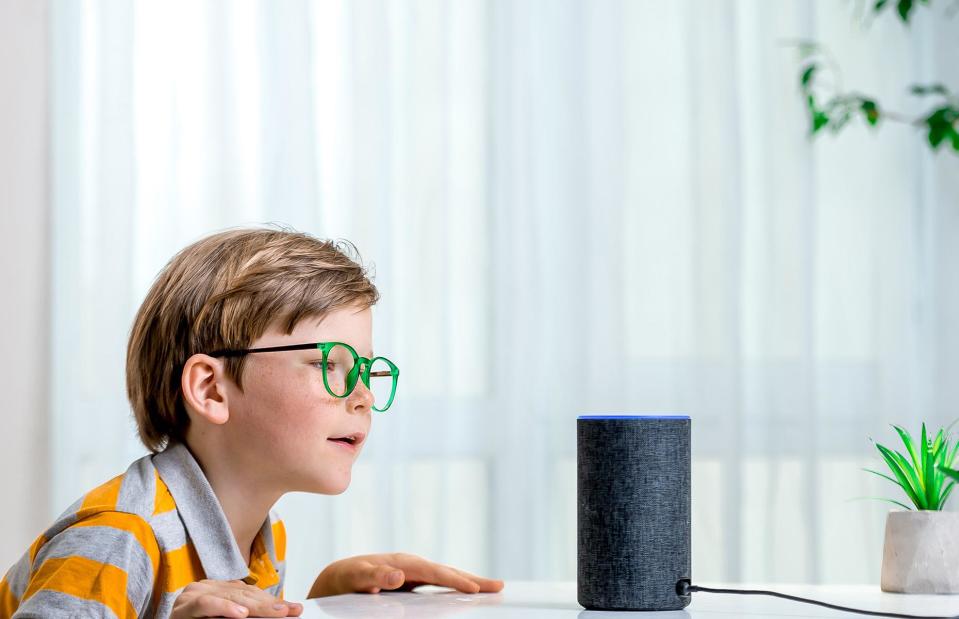
Sharomka / Shutterstock
One of the benefits of the Echo is that you can buy things from Amazon using just your voice. However, it does mean that anyone, including children, can shop through your device.
As voice purchasing is automatically activated from the outset, you’ll need to turn it off if you don’t want your tiny terrors ordering 20 different Paw Patrol toys...
Your wireless camera could be spying on you
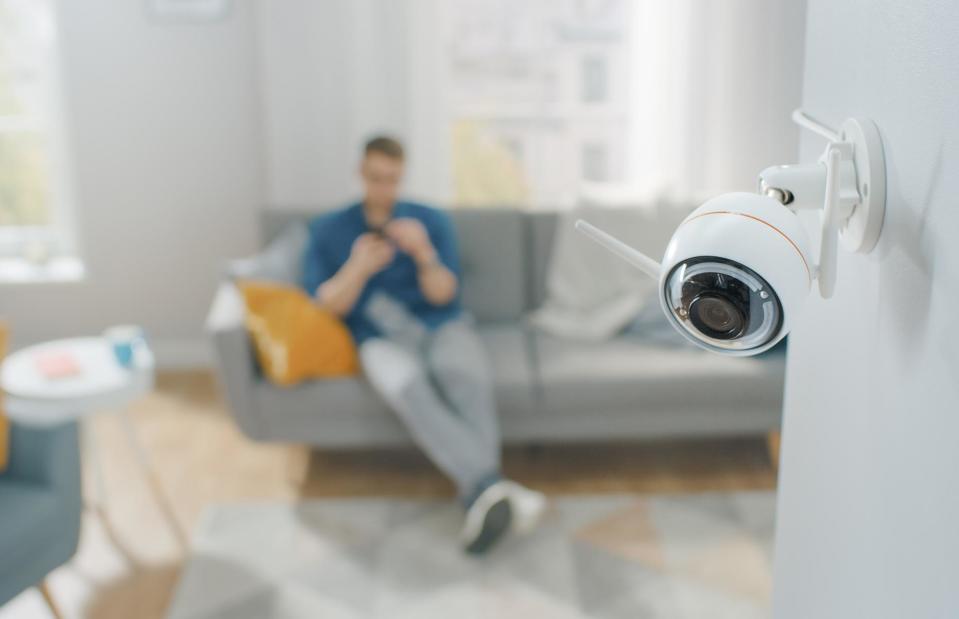
Gorodenkoff / Shutterstock
Wireless security cameras can be easy to hack as their passwords sometimes can't be changed, or they may not even be password-protected to begin with. This means someone could access your camera footage over the internet.
Always choose a camera from a reputable brand and change the default password to a secure one as soon as it's installed.
Not all smart toys are safe

fizkes / Shutterstock
Some connected toys, which typically use Bluetooth or Wi-Fi, are less than secure. Hackers can target wireless links or outdated software. In some cases, a device's data can be stolen, its camera or microphone can be accessed or it can be used as an entry point into your home network.
It isn't just tablets, game consoles and smartwatches that are vulnerable. Toys that have been exploited in recent years include Furby Connect, the i-Que Intelligent Robot, CloudPets and My Friend Cayla as reported by All Tech Magazine. Experts recommend researching toys before you buy them, installing software and firmware updates as soon as they're released and supervising your child when playing with smart toys.
Build a geofence
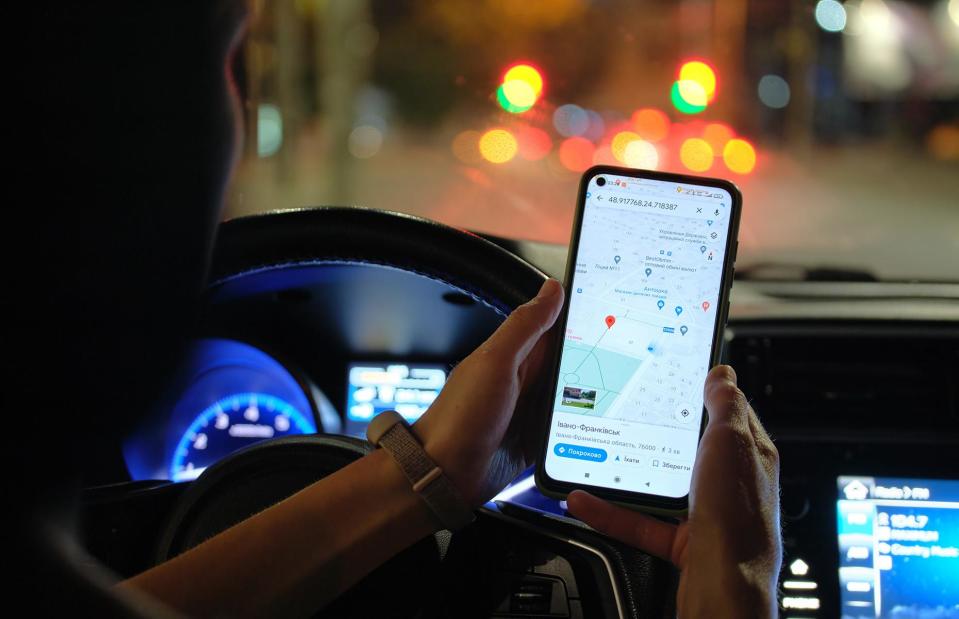
Bilanol / Shutterstock
Geofencing creates an invisible fence around your home. When you cross it while carrying your smartphone it triggers a pre-set routine. For example, you could use it to automatically turn off all the lights, lock the front door and start your car when you leave for work in the morning.
Since your phone always knows where you are, you can set your devices to respond to certain cues throughout your day. So you can set your home thermostat to boost the heat or your air conditioner to cool things down when you leave the office, ensuring the perfect temperature to welcome you home.
Wave goodbye to cold callers
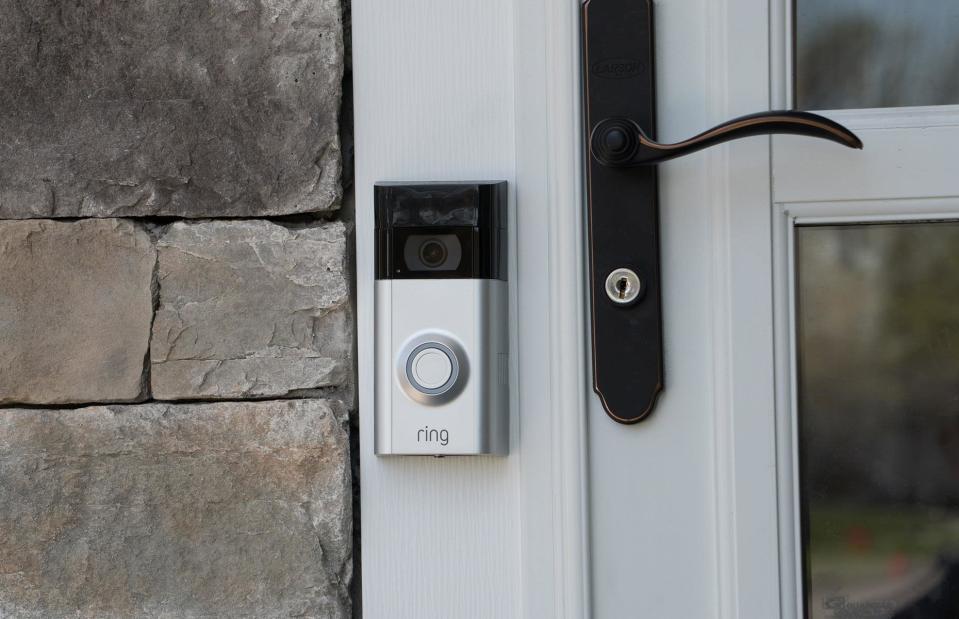
BrandonKleinPhoto / Shutterstock
So there's plenty to think about with safety, but what can smart tech do to make our lives easier?
The Video Doorbell from Ring, which is now owned by Amazon, sends you alerts via an app on your phone, tablet or computer when someone is at your door. You can then use the app to see who it is and you can speak to them without leaving the comfort of your sofa.
The wired version starts at £49.99 ($62), while wireless models start at £99.99 ($124).
Throw the ultimate parties with smart lighting
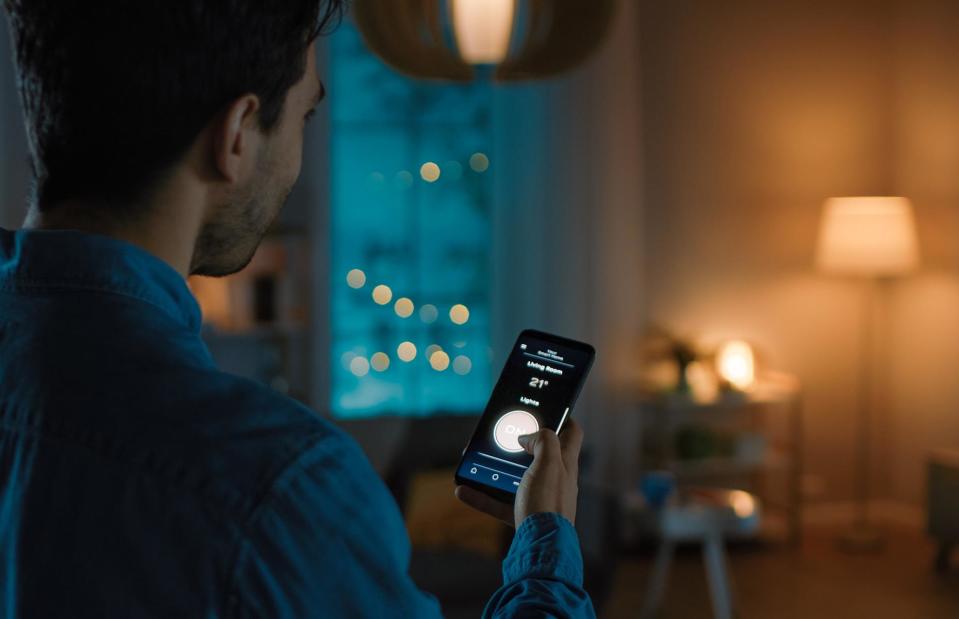
Gorodenkoff / Shutterstock
The perfect gadget for creating ambience at a dinner party, smart bulbs, like the ones from Philips Hue, for example, allow you to change your lighting preferences with just your voice.
Compatible with Amazon Echo and Google Home hubs, you can customise the colour and tone of your lights or pick one of the pre-set scenes.
Google Home knows which calendar is yours
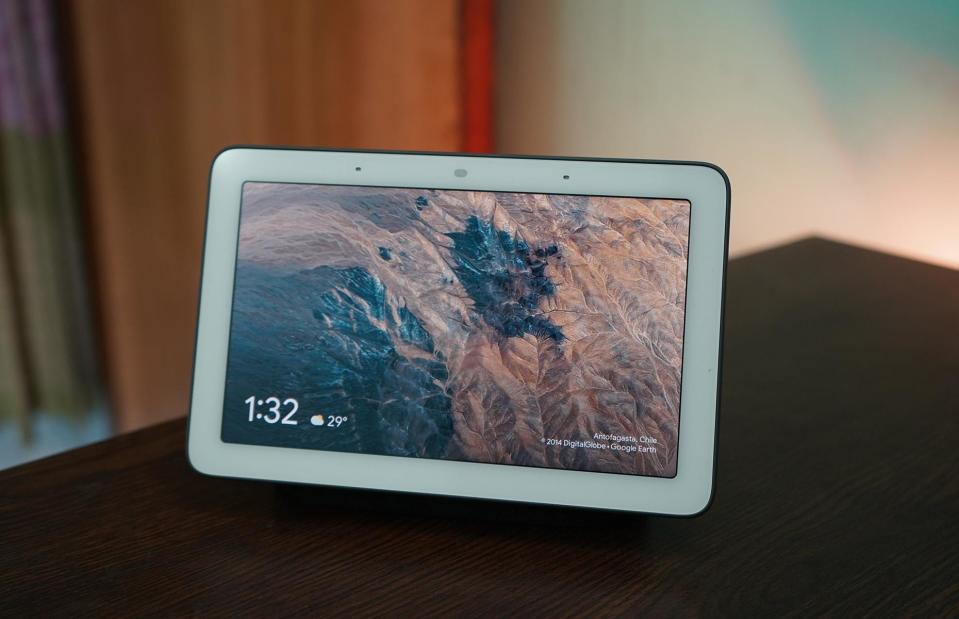
Yasin Hasan / Shutterstock
If you own a Google Home Nest Hub, you can link up to six different voices with Voice Match, enabling the Google Assistant to recognise each person in your household.
This means that when you say ‘OK Google, what’s my agenda for today?’ it will tell you your schedule, not your partner’s or roommate's.
Smart gadgets can help you stay safe at home
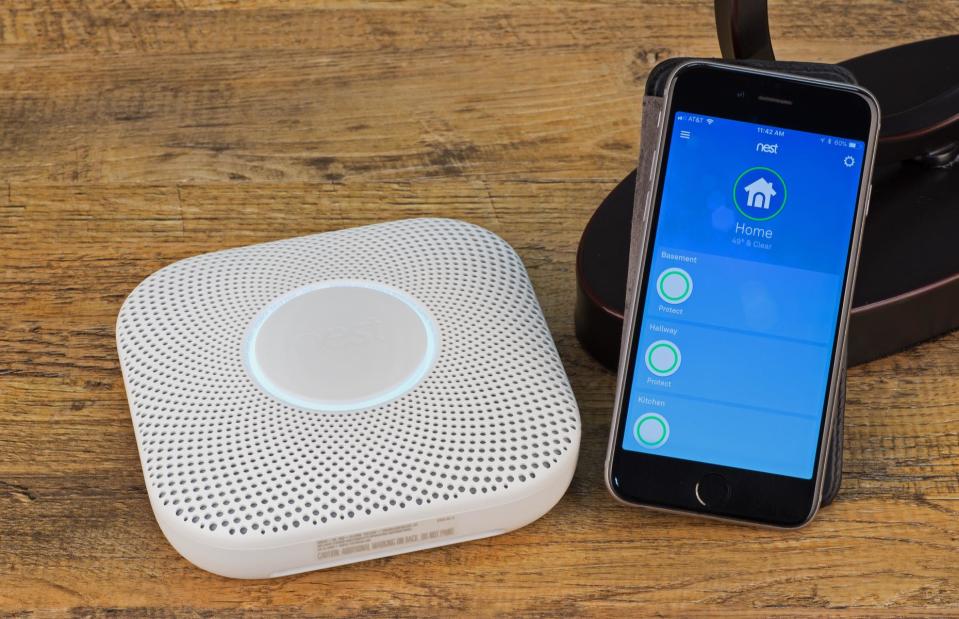
Charles Brutlag / Shutterstock
There are smart home products out there that work to keep you safe, rather than adding to your worries. Welcome to the world of smart safety and security which achieved 22.6% of the smart home tech market share in 2023, according to The Tech Report.
The Vivint Smart Home security system is a full-blown home security system that gives you 24/7 monitoring and full control over door locks, cameras, thermostats and lights.
Meanwhile, The Nest Protect alerts you through your phone if smoke or carbon monoxide is detected on your property. With a shelf life of up to a decade, it sounds an alarm on both the unit and your phone if unsafe levels are found.
Robot vacuums have come a long way
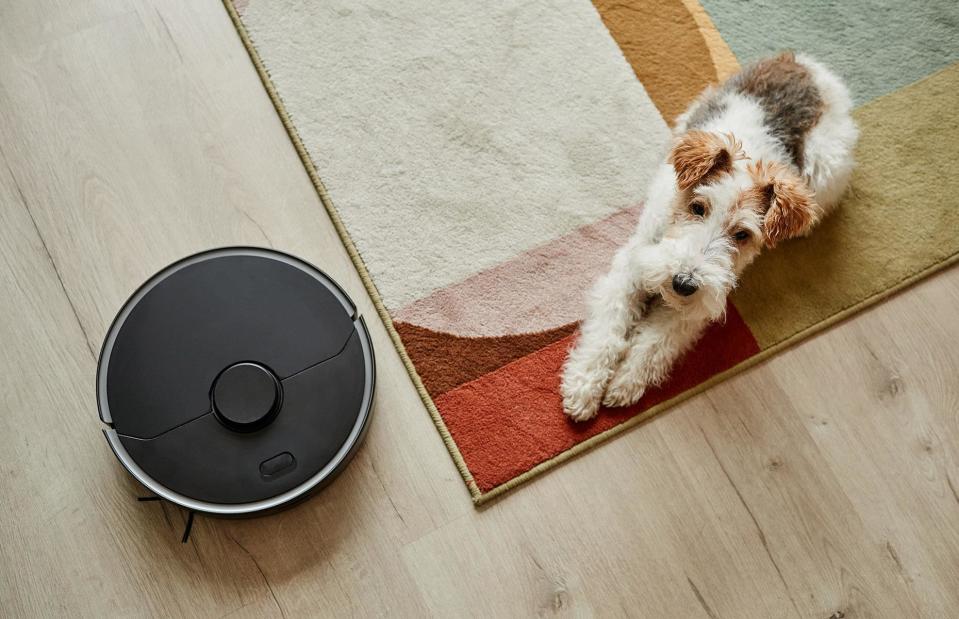
SeventyFour / Shutterstock
Robot vacuums have progressed since the first Roomba hit the market way back in 2002, says magazine Good Housekeeping. These days, the ingenious gadgets create a floorplan of your home and can avoid all sorts of obstacles placed in their path, they can even recognise things they shouldn't hoover up (like earbuds) and swerve to avoid them.
The iRobot Roomba s9+ adjusts suction when it moves between hard floors and carpet, is self-emptying and you can give it voice commands to clean certain areas.
At just three inches (7.6cm) tall, the Eufy BoostIQ RoboVac can suck up even the hardest-to-reach fluff under your sofa, while the Roborock S7 can vacuum and wet-mop your floors simultaneously. Impressive!
Do more than count steps with smart health tech
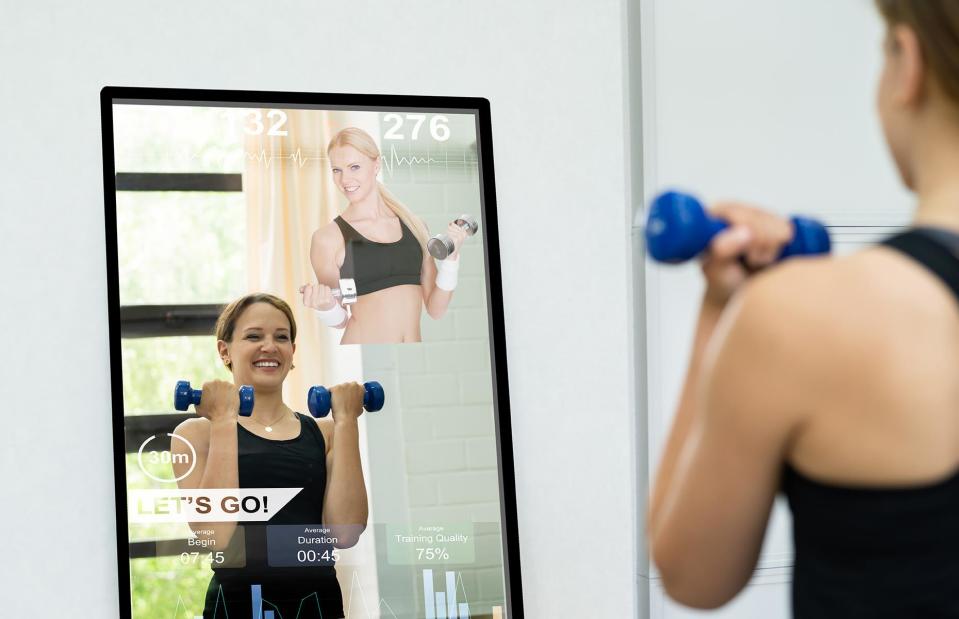
Andrey_Popov / Shutterstock
The pandemic sparked an increase in home health and fitness tech and it continued to grow even after gyms re-opened. Lululemon Studio, a futuristic smart mirror, has partnered with Peloton so users have thousands of classes available in an instant, from dancing and boxing to pilates and weights. All you have to do is watch your instructor and literally mirror them to ensure you're using perfect form.
Meanwhile, gizmos that would have sounded absurdly futuristic just a few years ago, think automatic pill dispensers, disinfecting UV lights, indoor air quality sensors and smart water filters that alert you to drinking water issues in real-time, are all very, very real.
Window tech can improve privacy and security
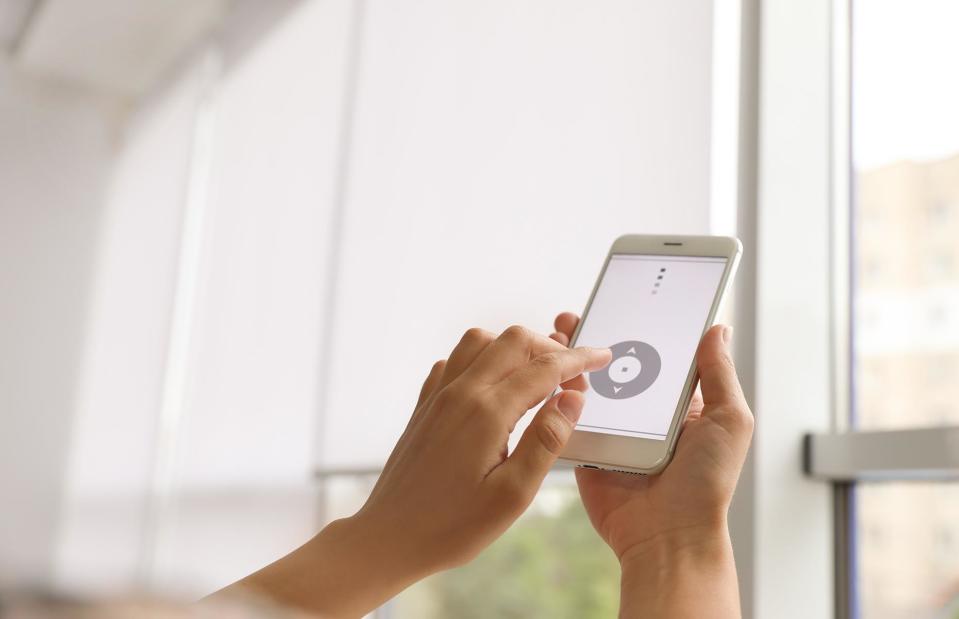
New Africa / Shutterstock
Once the height of luxury only seen in Bond films or the poshest hotels, remote-controlled curtains and blinds are now easier and cheaper to install in your home than ever before.
Not only can you set a timer to open and close them to fit your schedule, you can also control your curtains from your phone, which means you could trick potential burglars into thinking you're at home while you're actually sitting on a beach in the Caribbean, sipping from a coconut.
You can play with your pet remotely

Kirill Kurashov / Shutterstock
If you have a cat or dog at home, it might be worth looking into smart tech to improve their life (and yours). Furbo's 360 Dog Camera has colour night vision and it fully rotates to keep track of your dog in the room.
You can talk to your pup, get real-time barking alerts and even toss them treats. They also do a cat version, with a feather wand toy to keep them out of mischief.
And there's tech to help you clean up after them
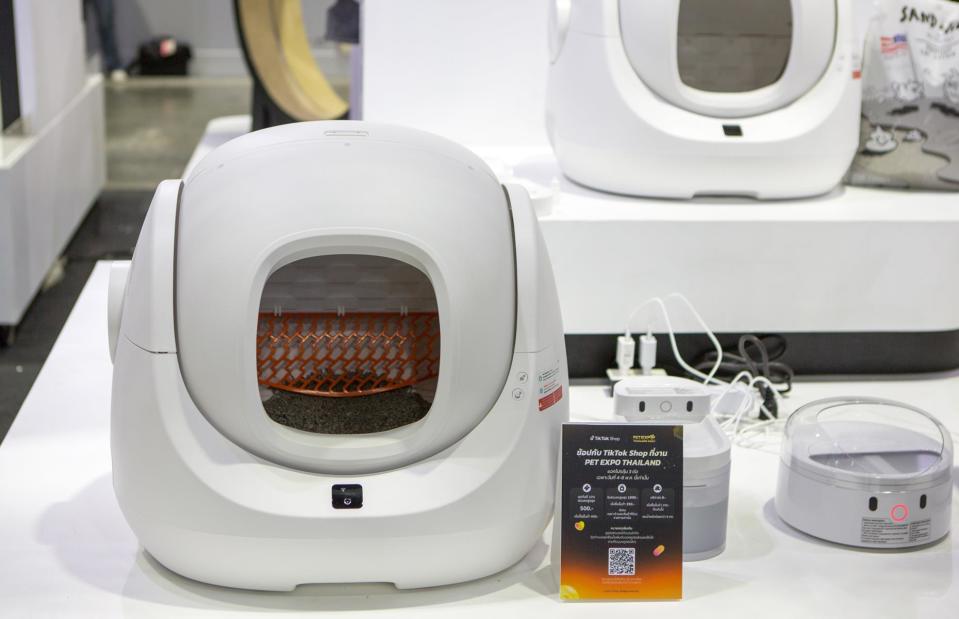
Itsanan / Shutterstock
And to clean up after your pets the smart way, the Roomba j7 suggests extra cleaning sessions during your pet's shedding season and avoids any pet waste.
Meanwhile, high-tech cat litter boxes like the one pictured can automatically separate soiled litter from clean, some incorporate night lights and automatic deodorising spritzers, something we're sure even the fussiest cats will appreciate!
A smart home can help people age well
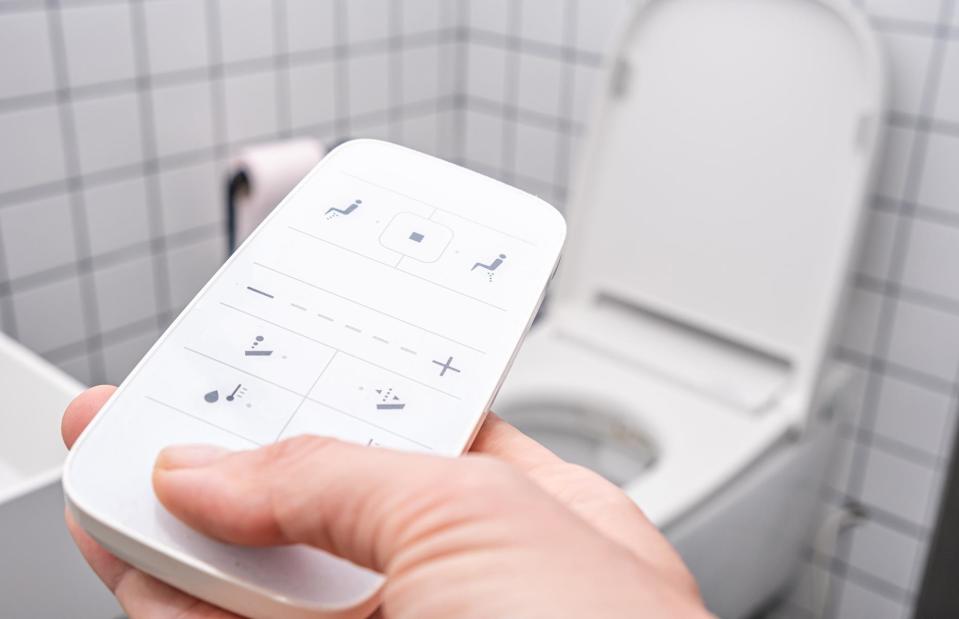
olgsera / Shutterstock
If you think the home you live in or are about to move into, will be your forever home, it's worth planning for the future and considering what integrated smart tech could help you in later life.
These days smart loos have multiple jets, a warm air dryer, in-bowl night light and infra-red user detection for an automatic flush and lid opening and closing. While it might seem like a fun gizmo, smart health and hygiene products, including smart showers, air purifiers, motion sensor lights, fall detectors and more, can be of huge help to those with mobility or other health issues.
Robot gardeners are better than ever
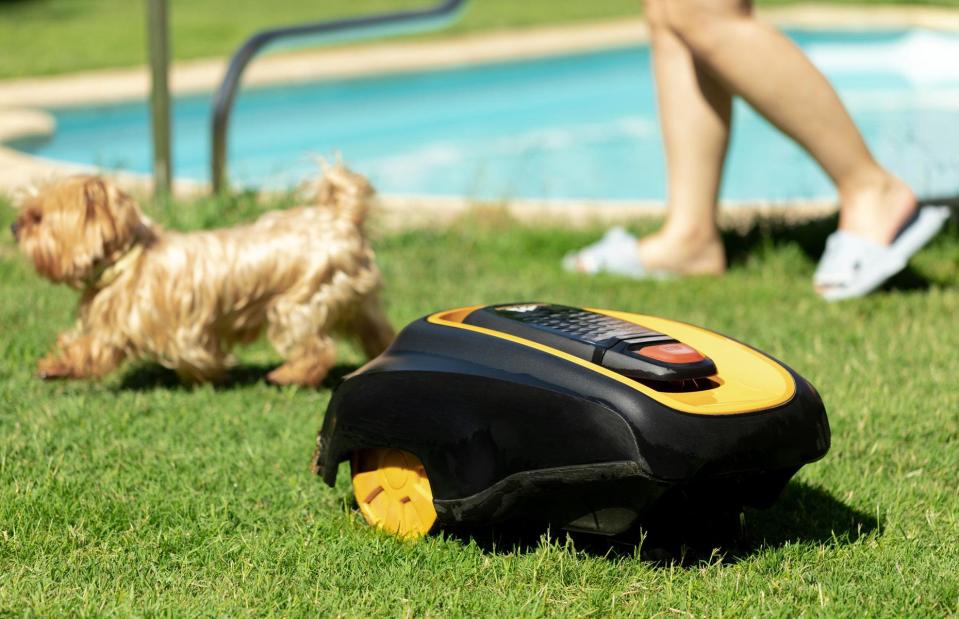
Studio Nut / Shutterstock
While we're busy filling our homes with all the latest tech offerings, it's easy to overlook our gardens. Modern mowers now have rain sensors and lawn sweeping capabilities. They don't even need boundary wires any more, you can just plot a virtual boundary on your phone.
Outdoor smart plugs, spotlight cameras and automated sprinklers with weather-based scheduling tech are all available to make our garden that little bit easier to manage and enjoy.
You can even get Wi-Fi-enabled gas barbeques that offer programmable smart recipes and LED lights for night grilling.
You can have a smart home without the wires
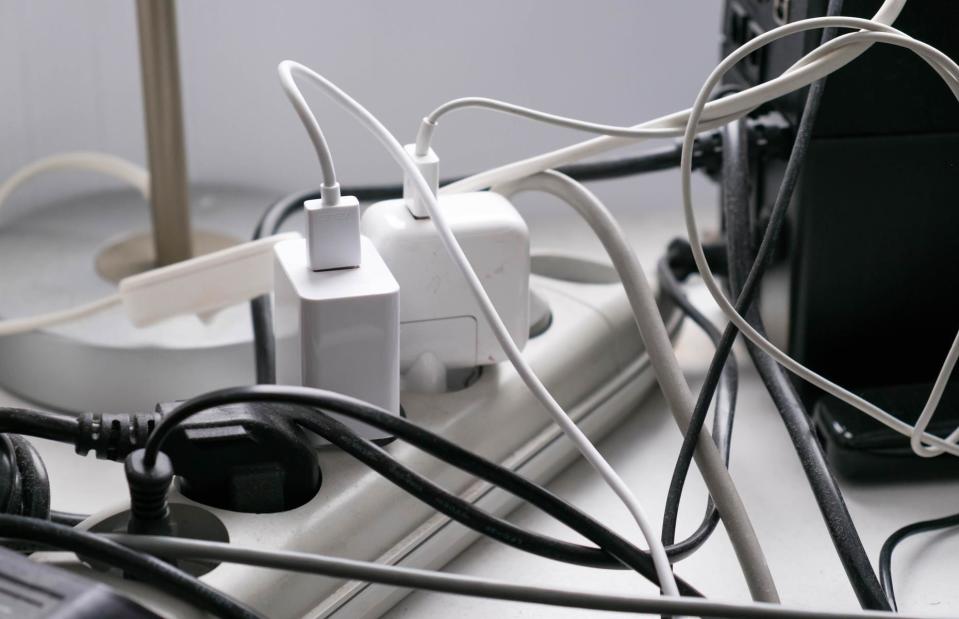
Yavdat / Shutterstock
If you're intrigued about the idea of smart tech, but can't quite face the idea of a house full of ugly wires, there are plenty of solutions. You can conceal wires with cable trunking, which you can paint to blend into your wall or use cable clips to snake them up the back of furniture legs.
Hide modems or speakers on shelves behind a row of false books or inside a basket. Keep the lid off as completely covering up electrical goods can pose a fire risk.
Create a dedicated charging nook
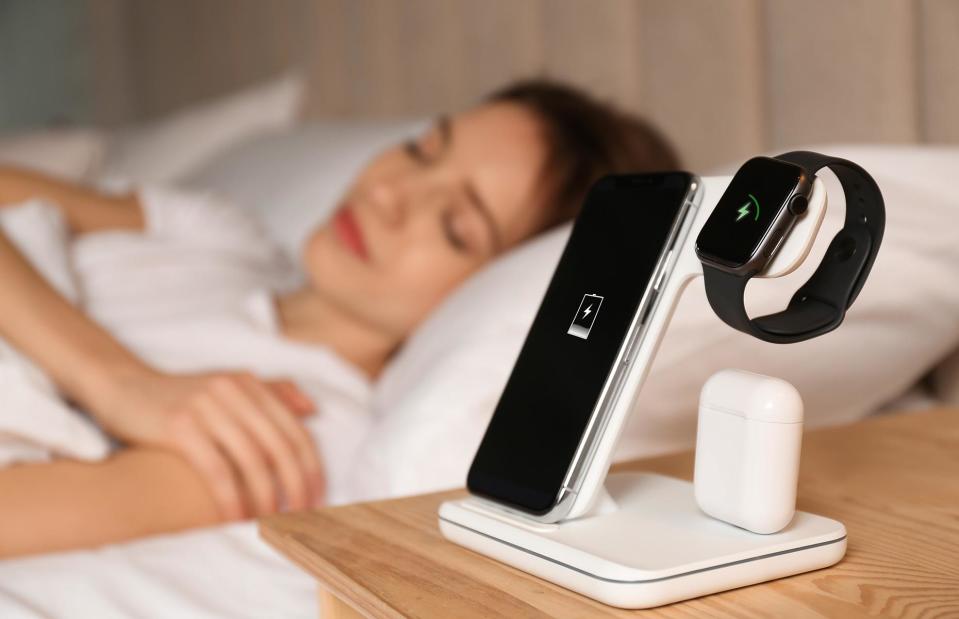
New Africa / Shutterstock
A wireless charging station like this one cuts the number of wires on your desk or bedside table from three to one, and there's a variety to choose from to suit your home, from futuristic designs to wood finishing.
Otherwise, consider creating a dedicated charging nook, where everyone takes their devices to charge, rather than having several plugs scattered around the house.
Mastering routines is the key to an automated home
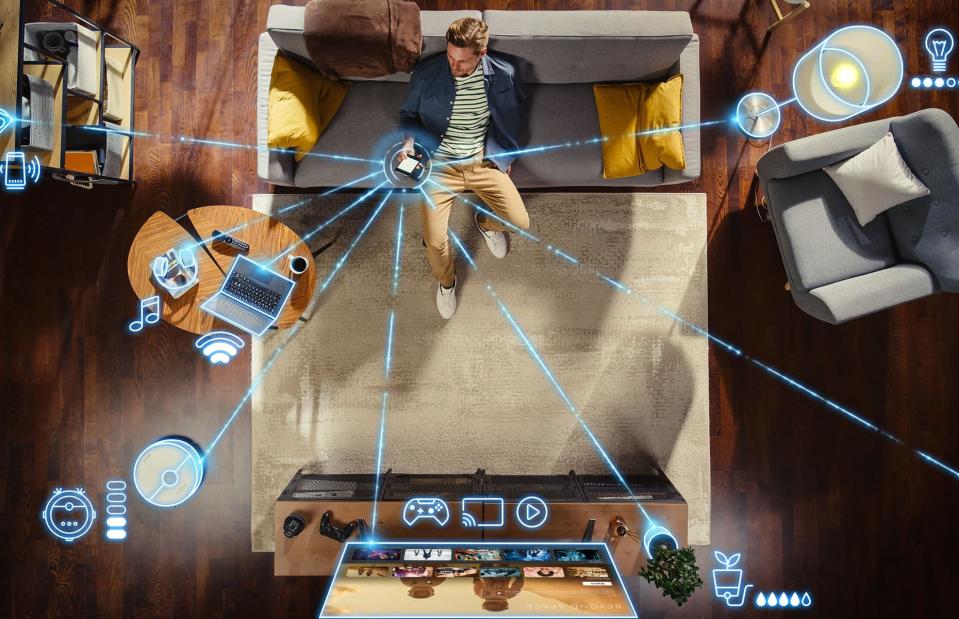
Gorodenkoff / Shutterstock
While all these gadgets are certainly fun, they really start to make a difference when they're integrated. Setting up automation might sound daunting, but it's simply a way of making all your smart tech work together, for you.
You can set automation, also known as routines, via your device's app or a smart-home platform app, and it's simply stringing together various functions. For example, you could create a morning routine that opens the curtains, turns on the news and brews your morning coffee once the clock hits 7 am. Sign us up for that!


